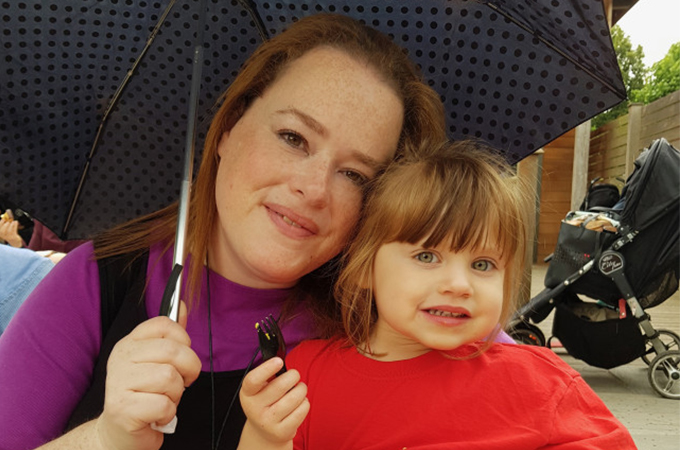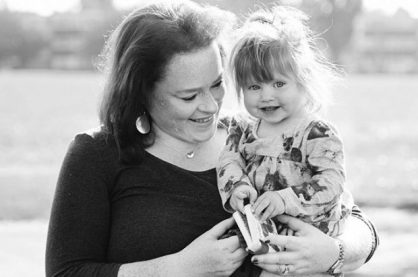
Open letter: Using an anonymous egg donor taught me that being a mother is not about genetics
Sarah Esdaile, an SGF Egg Donor Recipient and U.K. Patient Liaison, was recently interviewed about her decision to seek donor egg treatment in America. Sarah’s story began at age 40, when she was told of her infertility and that she would have to “forget motherhood, adopt, or use donor eggs.” Her story is real and raw, and we hope it brings hope and support to others who are on a similar journey.
“I wanted children more than anyone I knew but didn’t meet the man I wanted them with until I was 38. My husband and I started trying for a baby soon after we were married, but after a failed round of IVF, the doctors told us our options were to forget it, adopt, or use donor eggs. I had never heard of anyone using donor eggs – it all felt too much like an episode of Jeremy Kyle.”
“At the time, I was devastated and unable to get past the insurmountable idea of having a child with no genetic connection to me. But, when my sister – who was 37 and had two children of her own – offered to donate her eggs, I accepted, with gratitude. Unfortunately, using my sister’s eggs and my husband’s sperm also failed. I was close to despair, although in hindsight, I consider it a blessing in disguise.
My doctor and I discussed plan B, which came in the form of Dr. Michael Levy at Shady Grove Fertility in Washington, D.C., who had seen a high success rate with UK patients using donor eggs. We knew that we wanted to use an anonymous donor, but still get as much information as possible about her and moved forward with egg donor treatment in the US. I gave birth to my daughter in March 2014.”
Read more here about our egg donor registry, the largest egg donor programme in the nation.
 “I feel strongly about telling my story for two reasons. Firstly, I refuse to be part of the conspiracy of women lying about how they are getting pregnant in their 40s. I was that woman – reading about celebrities having twins at 45 and using these kind of stories to delude myself that it was ok to wait, because I’d have plenty of time to have a baby.”
“I feel strongly about telling my story for two reasons. Firstly, I refuse to be part of the conspiracy of women lying about how they are getting pregnant in their 40s. I was that woman – reading about celebrities having twins at 45 and using these kind of stories to delude myself that it was ok to wait, because I’d have plenty of time to have a baby.”
“Secondly, I want women to be aware of the limitations of their fertility: sex education needs to be about more than not getting pregnant or contracting an STD. It must raise awareness of the brutal decline in fertility with age and how hard it can be to get pregnant at all. People can be very ignorant about infertility unless they encounter problems of their own, especially when it comes to egg donation. Some have asked me how I got my child back into the country and whether I had to adopt her. If I had waited until I was completely sure, I would never have done it, but ultimately, it comes down to how much you want a baby.”
“Being a mother is such a practical thing, there is neither the time nor energy to dwell on anything but keeping your baby clean, fed, and thriving. I experienced that feeling of familiarity that all mothers describe. When my daughter came out, she felt like an old friend that I was desperate to see – I was beyond excited to meet her, yet had a strong sense that I knew her well already.”
“It was expensive to go to America for treatment but there were advantages, such as the Shared Risk 100% Refund Programme, which means that you are guaranteed a baby or get your money back. The cost was around $35,000 for up to six rounds of treatment. At the end, you either end up with a baby – in which case the money seems irrelevant – or you just lose the price of flights and hotels. Once I got past the buy-one-get-one-free aspect, I realised that this was a stroke of genius. People often ask me whether I wish I had only paid for a single round, given I got pregnant on my first attempt, but I don’t. Having the safety net of further rounds enabled me to relax and trust the process.”
The expense of our programme varies according to the number of attempts, programme chosen, location, and travel expenses. Costs range from $15,000 to over $50,000 and most insurance providers do not cover donor egg treatment, therefore patients are financing their entire treatment. Fortunately, Shady Grove Fertility’s Shared Risk 100% Refund Programme helps eliminate the financial burden by allowing recipients to participate in several cycles for one fee.
Another feasible option is the Shared Donor Egg Programme, which can reduce the cost of donor egg treatment by up to 50 percent or can be combined with our Shared Risk 100% Refund Programme for Donor Egg for the same cost as a single traditional donor egg cycle. By sharing donated eggs with one or two other recipients, patients are sharing in the cost of that donor while maintaining the same success rate. We will synchronise each recipient’s treatment cycle and share the eggs retrieved from the donor among the recipients.
If you’re looking for extra inspiration, read more of our Egg Donor Patient Success Stories:
To learn more about Shady Grove Fertility’s Donor Egg Program, please contact Amanda Segal, our International Patient Liaison, by calling 0208-003-0827 or [email protected].

